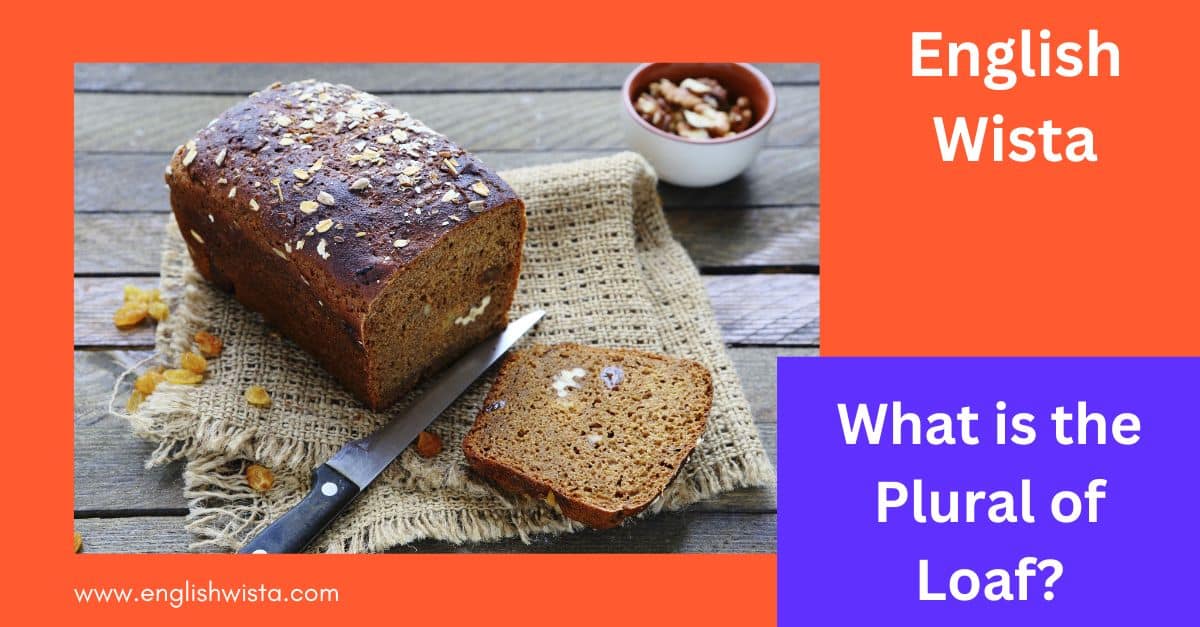Did you know the plural of loaf isn’t just a simple “add an s” situation? If you’ve ever found yourself hesitating between “loafs” and “loaves” while chatting or writing, you’re not alone! The English language loves to throw us these quirky curveballs, and this one has a fascinating backstory tied to grammar rules and history.
In this quick and easy read, you’ll not only learn the correct plural of loaf but also uncover why it changes the way it does. Trust me, by the end, you’ll never second-guess this word again. Let’s dive in and settle the mystery!
What Is a Loaf? A Quick Definition
Before we tackle the plural, let’s start with the basics. A loaf is a single, rounded or oblong mass of bread that has been baked as one piece. You’ve probably seen loaves of bread in many shapes and sizes, from classic sandwich bread to artisan sourdough.
The word loaf can also describe other foods shaped similarly, like a meatloaf. But whether we’re talking about bread or meat, the idea remains the same: a loaf is one unit. Got it? Great! Now let’s move on to the fun part.
What Is the Plural of Loaf?
Here’s the short and sweet answer: The plural of loaf is loaves (pronounced “lohvz”). When you have more than one loaf of bread, you say loaves of bread. For example:
- I bought two loaves of sourdough from the bakery.
- The bakery shelves were stacked with loaves of fresh bread.
Why Does “Loaf” Change to “Loaves”?
English has a tricky habit of changing words when they go from singular to plural. In the case of loaf, the “f” changes to a “ve” before adding the “s.” This pattern isn’t unique to loaf. Other words follow the same rule, like:
- Wolf -> Wolves
- Leaf -> Leaves
- Knife -> Knives
Why does this happen? It goes back to the history of English and how it has borrowed rules and structures from other languages over time. While many nouns in English simply add “s” to become plural (like dog -> dogs), some words—like loaf—follow older patterns that involve changing the ending. Think of it as English keeping things interesting!
How Do You Pronounce “Loaves”?
The singular word loaf rhymes with “goat.” When it becomes plural, loaves rhymes with “roves.” Try saying this out loud:
- Loaf (loh-f)
- Loaves (loh-vz)
Notice how the “f” sound in loaf changes to a “v” sound in loaves. It’s a small shift, but it makes a big difference in how the word sounds.
Common Mistakes and Misconceptions
English learners (and even native speakers) sometimes make mistakes when trying to pluralize loaf. Here are a few common pitfalls to watch out for:
- Mistake #1: Adding just an “-s”
Some people might say loafs instead of loaves. While this might seem logical at first, it’s not correct. Remember, the “f” changes to “ve” before the plural ending. Example: “I bought three loafs of bread” (incorrect) -> “I bought three loaves of bread” (correct). - Mistake #2: Overcomplicating it
Some people might overthink and come up with forms like loafies or loafsies. English can be tricky, but it’s usually simpler than that. Stick to loaves! - Mistake #3: Mixing singular and plural
It’s easy to mix up singular and plural forms in a sentence. For example: “Each of the loaves is freshly baked” (correct) vs. “Each of the loaf is freshly baked” (incorrect).
Real-Life Examples of “Loaves” in Action
Seeing words used in sentences can help them stick in your memory. Here are some practical examples:
- “The bakery sells loaves of bread in different flavors, including garlic, rye, and whole wheat.”
- “We baked two loaves of banana bread for the family picnic.”
- “Can you grab a couple of loaves of French bread on your way home?”
- “The farmer’s market displayed loaves of bread alongside baskets of fresh fruit.”
- “After the storm, the community center handed out loaves of bread to those in need.”
Fun Facts About the Word “Loaf”
Now that you’re a pro at the plural of loaf, let’s explore some fun facts about the word:
- Origin of the Word: The word loaf comes from the Old English word hlaf, which referred to bread or food. It’s related to the modern word lord, which originally meant “keeper of the bread” (from hlafweard).
- Collective Noun for Bread: While we say loaves for multiple loaves of bread, there isn’t a specific collective noun for bread as a whole. Instead, we might say “a batch of bread” or “a basket of bread.”
- Idioms Involving Loaf: The word loaf appears in some fun English idioms. For example:
- “Use your loaf!” – This means “use your brain” or “think carefully.” It comes from rhyming slang where “loaf of bread” stands for “head.”
- “Living on the breadline” – This phrase refers to living at the edge of poverty.
Other Words That Change Like “Loaf”
If you’ve mastered loaf -> loaves, you might find it helpful to know other words that follow a similar pattern. Here are a few examples:
- Calf -> Calves
Singular: “The calf followed its mother.”
Plural: “The calves grazed in the meadow.” - Half -> Halves
Singular: “I’ll take half of the pizza.”
Plural: “We cut the sandwiches into halves.” - Shelf -> Shelves
Singular: “The book is on the top shelf.”
Plural: “The shelves were filled with novels and trinkets.”
By spotting patterns in these words, you’ll get better at recognizing and using irregular plurals in English.
Conclusion: Takeaways to Remember
So, what’s the plural of loaf? It’s loaves! This change from “f” to “ve” may feel tricky at first, but with a little practice, it becomes second nature. Here are the key points to keep in mind:
- The singular is loaf, and the plural is loaves.
- The “f” changes to “ve” when making it plural.
- Always pronounce loaves with a “v” sound (loh-vz).
- Use practical examples and patterns to reinforce your understanding.
Language learning is like baking bread—it takes time, patience, and a



